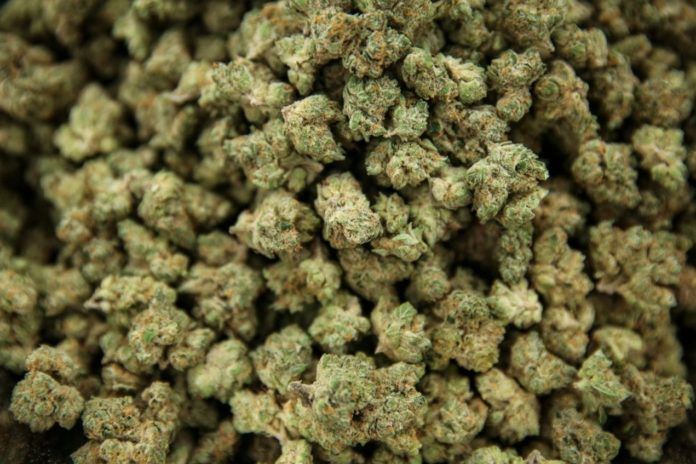Marijuana, medically known as cannabis, found to be associated with increased risk of delayed cerebral ischemia, severe physical disability and death in patients with aneurysmal subarachnoid hemorrhage stroke.
A new study published today found that marijuana users with aSAH stroke, a type of bleeding stroke, had a higher risk of developing a serious complication that can result in death or disability.
The study, which was published in the journal Stroke today, is the largest to look at the effects of THC, or tetrahydrocannabinol, the psychoactive component of marijuana (which alters a person’s mental state), on consequences following an aneurysmal subarachnoid hemorrhage (a rare but severe form of stroke).
An aneurysmal subarachnoid hemorrhage stroke occurs when a weakened and bulging portion of a blood vessel on the surface of the brain (referred to as a ruptured aneurysm) bursts, causing bleeding in the space between the brain and the tissue that surrounds it (referred to as the subarachnoid space).
This form of stroke can be severe, resulting in neurological damage in approximately 66 percent of people and death (during the follow-up period) in approximately 40 percent. The primary goal of urgent treatment for aneurysmal subarachnoid hemorrhage is to stop the bleeding and prevent it from spreading.
Regardless of treatment, many patients may experience worsening symptoms in the 14 days following an aneurysmal subarachnoid hemorrhage (such as speech problems or difficulty moving).
This is caused by the blood from the previous stroke irritating blood vessels, causing them to tighten enough to shut off blood flow to a region of the brain (a condition known as vasospasm), resulting in additional brain injury (also known as a recurrent stroke). This consequence, known as delayed cerebral ischemia, is a primary cause of death and disability following an acute ischemic stroke (aSAH).
“We’re all vulnerable to a bleeding stroke or a ruptured aneurysm, however, if you’re a routine marijuana user, you may be predisposed to a worse outcome from a stroke after the rupture of that aneurysm,” says Michael T. Lawton, senior author of the study.
Between January 1, 2007 and July 31, 2019, researchers evaluated data from more than 1,000 patients who had been treated at Barrow Neurological Institute for aneurysmal subarachnoid hemorrhage between January 1, 2007 and July 31, 2019.
All of the patients had been treated to stop the bleeding in one of two ways: 1) open surgery to clip off the base of the aneurysm, or 2) noninvasively, by threading a thin tube through a blood vessel to the base of the aneurysm and releasing coils that fold to fill in the space and act as a barrier to further bleeding, as described in the study.
All patients with ruptured aneurysms were subjected to a urine toxicology screening. After testing positive for THC (the psychoactive component of cannabis, also known as marijuana), the researchers compared the occurrence of delayed cerebral ischemia in 46 people (average age 47 years; 41 percent female) with THC and 968 people (average age 56 years; 71 percent female) who did not test positive for THC. A positive urine test for THC indicates that the subject has been exposed to cannabis within three days for a single usage and within about 30 days for frequent and severe use.
When compared to individuals who tested negative for THC, recent cannabis users had no larger aneurysms or worse stroke symptoms when brought to the hospital, nor were they more likely to have high blood pressure or other cardiovascular risk factors. However, people who had recently used cannabis were much more likely to also have tested positive for cocaine, methamphetamines, and tobacco.
One-third of those who took part in the study, 36 percent, got delayed cerebral ischemia; half of those, 50 perecent, who did suffered moderate to severe disability; and 13.5 percent died.
After accounting for a variety of patient characteristics as well as recent exposure to other illicit substances, it was discovered that patients who tested positive for THC at the time of the last follow-up were:
- 2.7 times more likely to develop delayed cerebral ischemia;
- 2.8 times more likely to have long-term moderate to severe physical disability; and
- 2.2 times more likely to die.
“When people come in with ruptured aneurysms, and they have a history of cannabis use or are positive on a toxicology screen, it should raise a red flag to the treating team that they are at higher risk of vasospasm and ischemic complication,” Lawton added. “Of all the substances detected in the toxicology screen, only cannabis raised the risk of delayed cerebral ischemia. Cocaine and meth are hypertensive drugs, so they are likely related to the actual rupture but not expected to have an impact on vasospasm.”
The study does not go into detail on how cannabis increases the risk of vasospasm and delayed cerebral ischemia.
Lawton said, “Cannabis may impair oxygen metabolization and energy production within cells. When stressed by a ruptured aneurysm, the cells are much more vulnerable to changes that affect the delivery of oxygen and the flow of blood to the brain.”
There are certain limitations to the study, including the fact that it was conducted retrospectively at a single institution and that it did not compare those who use marijuana to those who don’t.
The researchers are currently performing follow-up The researchers are still doing follow-up work in the lab to learn more about how THC might affect aneurysm formation and rupture. They also call for more research to be conducted to determine the influence of different THC concentrations on the development of stroke complications.
“Evaluating the risks and benefits of marijuana use is more important given its popularity and as more states make recreational marijuana use legal,” said the author.
Source: 10.1161/STROKEAHA.121.035650
Image Credit: Getty
You were reading: Marijuana doubles severe physical disability and death risk in aSAH stroke patients, study finds
